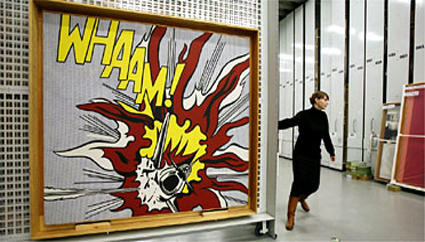Tate Modern Rehang. Review by Andrew Graham-Dixon.
When Tate Modern opened, in 2000, it boldly presented itself as a new kind of modern art museum, brave enough to dispense with the linear, chronological model of the history of twentieth-century art. That model was originally pioneered by the vastly influential Alfred Barr, in the 1930s, at the Museum of Modern Art in New York; but at the dawn of the new millennium, Tate Modern’s creator and supremo, Nicholas Serota – playing Oedipus to Barr’s King Laius – pronounced that old, evolutionary history of modernism dead and discredited. So it was that his museum’s hang dispensed with chronology and traditional groupings by movement – Dadaism, Cubism, and so on – arranging Tate’s holdings of modern and contemporary art according to themes instead: “Landscape”, “Still Life”, “The Nude” and “History”.
The result was sporadically illuminating, but compromised both by an overwhelming sense of arbitrariness – the works of Picasso, for example, seemed to fit both everywhere and nowhere in such a scheme – and an unpleasant aura of intellectual smugness. Solve the picture-puzzle of the hang, the unwritten implication seemed to be, and visitors might congratulate themselves on being almost as fantastically clever, almost as subtly ingenious, as the curatorial staff who had put it together in the first place.
Six years on and it is all change at Tate Modern, where the ever-shifting displays of the permanent collection – which perhaps, henceforth, should be known as the impermanent collection – have been rehung according to a new set of ordering principles. This represents less than a complete U-turn. The emphasis on theme, rather than straight chronology, has been retained, so that the works of art on display are divided, as before, into four suites of galleries, under such rubrics as...


